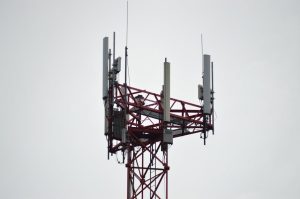
MEO Satellites: Revolutionizing Global Connectivity with Medium Earth Orbit Technology
Medium Earth Orbit (MEO) satellites are revolutionizing the way we communicate and access data globally. With their unique orbital position, MEO satellites offer faster and more reliable connections than traditional Geostationary Orbit (GEO) satellites. In this article, we will delve into the world of MEO satellites, exploring their history, technology, and applications, as well as their impact on the future of global connectivity.
Introduction to MEO Satellites
MEO satellites operate at an altitude of approximately 2,000 to 36,000 kilometers, which is higher than Low Earth Orbit (LEO) satellites but lower than GEO satellites. This orbital position allows MEO satellites to cover a wider area than LEO satellites, while also providing faster data transfer rates and lower latency than GEO satellites. The first MEO satellite was launched in the 1990s, but it wasn’t until the 2010s that the technology began to gain traction, with companies like O3b Networks and SES launching constellations of MEO satellites to provide high-speed internet connectivity to underserved communities around the world.
Technology and Applications of MEO Satellites
MEO satellites use advanced technology to provide high-speed data transfer rates and low latency. They operate in the Ka-band or Ku-band frequency range, which allows for higher data transfer rates and better resistance to interference. MEO satellites are used in a variety of applications, including broadband internet access, mobile backhaul, and maritime connectivity. They are also used to provide connectivity to remote or underserved communities, where traditional fiber-optic or cellular networks may not be available. In addition, MEO satellites are used to support a range of industries, including aviation, maritime, and energy, by providing critical communications and data transfer services.
Benefits and Challenges of MEO Satellites
MEO satellites offer a range of benefits, including faster data transfer rates, lower latency, and wider coverage areas. They are also more resistant to interference and have better signal strength than LEO satellites. However, MEO satellites also face several challenges, including higher launch costs, more complex technology, and regulatory hurdles. Despite these challenges, the demand for MEO satellites is increasing, driven by the growing need for high-speed connectivity and the limited availability of traditional fiber-optic or cellular networks in many parts of the world.
Future of MEO Satellites
The future of MEO satellites looks bright, with several companies planning to launch new constellations of MEO satellites in the coming years. These constellations will provide even faster data transfer rates, lower latency, and wider coverage areas, and will support a range of applications, including 5G wireless networks, IoT, and satellite-based broadband internet access. As the demand for high-speed connectivity continues to grow, MEO satellites are likely to play an increasingly important role in meeting this demand, particularly in areas where traditional fiber-optic or cellular networks are not available.




